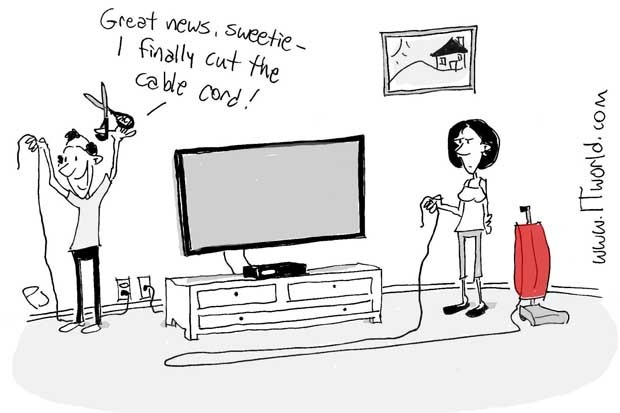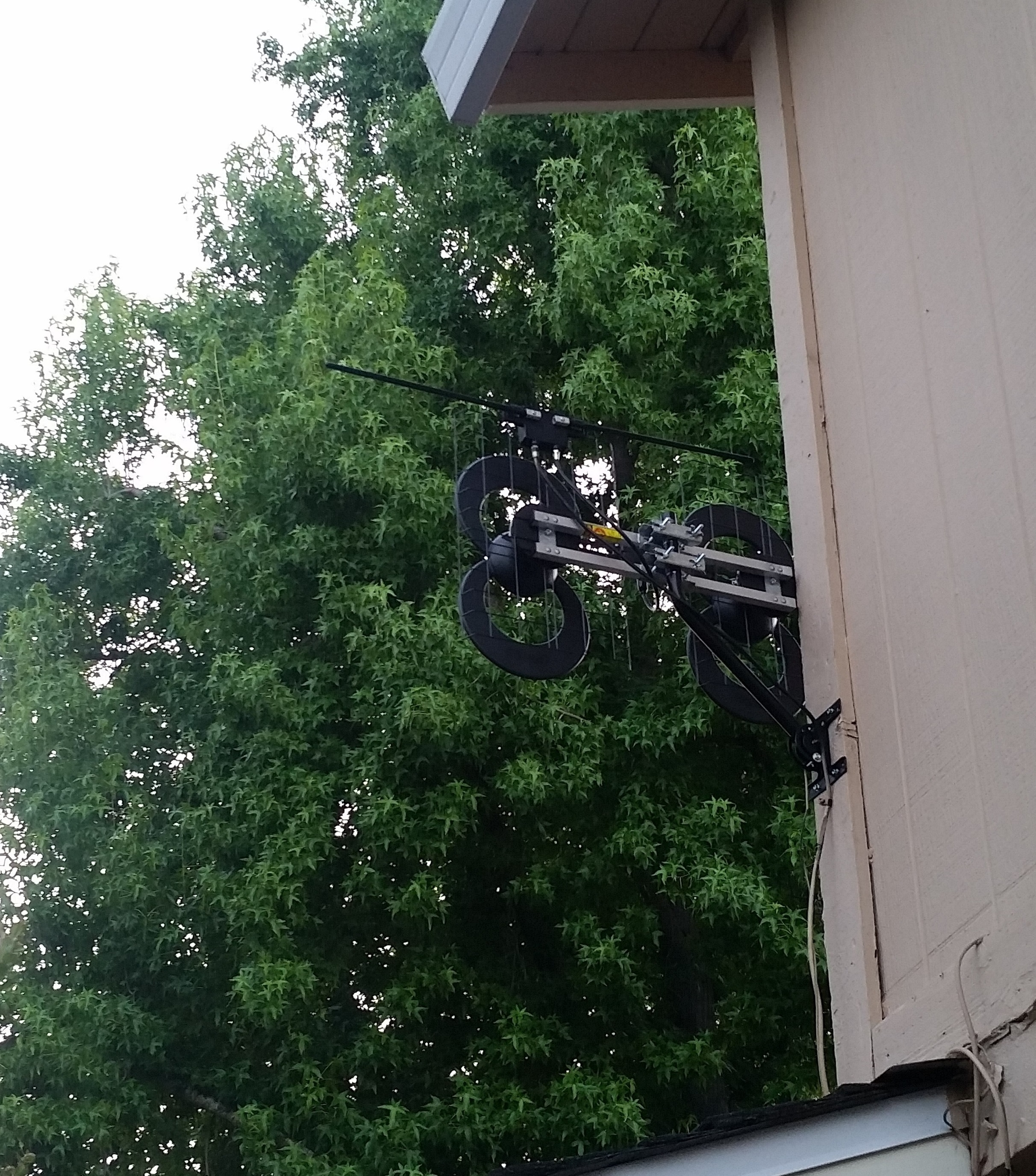
We finally did it.
My dad and I have been entertaining the idea of ditching our Dish Network subscription for free OTA TV for several years but never gave it an honest effort, until now. We pay about $65 per month to Dish Network for our TV service which nets us 100+ channels. But given the fact that we don’t watch 80% of them, it just doesn’t seem justifiable.
Introducing OTA
If you do not know, all five major television networks (ABC, CBS, NBC, FOX, and PBS) broadcast their channels over the air (OTA) for free to anyone with a TV antenna and digital tuner (included in most TV’s these days).
And in fact, the quality of these broadcasts is often superior to that provided by cable providers because the signal is uncompressed. To see what channels are available in your area, you can head over to Antenna Point. Enter in your address and it will show a map where your broadcast towers are located. If you live in an area with good coverage, you can simple buy an indoor antenna, connect it to your TV and get going. If you are not so lucky (as we were) you will need to mount yours outdoors. If you live in an apartment/condo/townhouse the FCC provides a website detailing your rights for owning and installing an ota device.
Our Story
As I mentioned before, my Dad and I had tried TV antennas several times before. Roughly very six months my dad would get motivated enough to give it another go, only to be disappointed with our failure. We tried several indoor antennas of different flavors from rabbit ears to the thin “leaf” style. Our latest endeavor was over winter break when we tested a relatively more expensive square box with a powered amplifier. After that one didn’t work, I thought we had finally put the idea to rest. However when I came back home six months later for summer, my dad asked me to look into it again. This time I thought I’d really do my research.
Types of Antennas
The selection of antennas available is vast, and navigating through the field of options was quite daunting. So much so that at first I just ordered a simple “Indoor Attic Antenna” by GE from Home Depot because 1) I knew returning it would be easy, and 2) because I hoped getting high up in the attic would be the solution (high is always better right?). Well, sort of. The antenna was able to receive two sets of channels but not at the same time. When oriented a certain way, we were able to pick up three but not the other two and when positioned in a different direction we got the other two but not the earlier three. So I finally decided to sit down and do some proper reading. Here is an overview of how OTA TV works:
-
There are two ranges of frequencies that the networks broadcast at: Very High Frequency (VHF) and Ultra High Frequency (UHF). Most digital channels now have moved on to UHF frequencies do to generally lower amounts of interference from random electrical equipment. However some stations still use VHF, mainly Channels 2-13 (note however some of these channels have switched to UHF but kept the original number for consistency).
-
Check Antenna Point to see whether you have any VHF channels in your area. If a great number of channels are broadcasted in the lower frequency, you may need an antenna that is rated for ~54MHz - 216MHz. If only a couple still use the VHF band (like it is for us), you will be okay with a more generic VHF/UHF antenna.
-
In terms of actual antenna types there are many: Yagi, Bowtie, Dipole, etc. You can read more about them here. To be honest, I don’t think the type matters too much as long as it is well rated. Just know that a Yagi is generally larger and more directional (needs to be aligned with the tower more accurately) but also good for long ranges where was something like a bowtie is multidirectional and a more compact. What’s more important are the rated range and frequencies it can receive.
-
Getting higher off the ground will result in better reception. So why didn’t the attic work? It is because things like walls and trees can reduce the signal strength. Thus it is ideal to mount high outside in a clearing with a “straight line view” of the towers.

Our antenna mounted on a side wall
Conclusion
Flustered by the many choices of Antennas, I called Antenna’s Direct which offers free support in selecting an antenna. The customer support rep. ran a signal strength analysis on my location and suggested their Clearstream 4V facing 310° for my situation. Given that this was their most expensive antenna, I wondered whether I was being taken advantage of. However seeing that it was available at my local Best Buy I decided to pick it up, again for the convenience of being able returning it easily (I also found an open box unit on a discount). We tried the new antenna in various locations around the house: again in the attic, on a tripod in the patio, and in front of our house, all to not avail. Finally I convinced my dad that we just needed more elevation and mounted it roughly 15’ high on a side wall of our house. Alas, we received all the channels!
Ultimately I don’t know whether the Clearstream 4V made the difference, or it was solely the height/clearance. Your mileage may vary; a cheaper antenna may suffice for you. But this one seems to be working for us, and I am glad to say that we have officially cut the cord.
Future Improvements
-
We would like to run the antenna to all three TV’s in our house (currently it is only connected to the main one). We have some spare non-amplified splitters laying around and are going to try them out, hopefully it works! However signal strength tends to decrease with additional lines and we may need a powered splitter.
-
Since there no longer is a cable box, you lose some neat features such as a TV guide and DVR (although we never had this). Turns out the Xbox One works pretty well as a TV box. With the Hauppauge Digital TV Tuner you can connect the antenna to your Xbox rather than going directly to your TV. You can then use OneGuide to view your TV Listings (in addition to apps such as Netflix), use voice control with Kinect, pause live TV, and even stream live TV to any phone or Windows 10 device using the SmartGlass app. Those are some killer features and I am seriously considering purchasing an Xbox One.